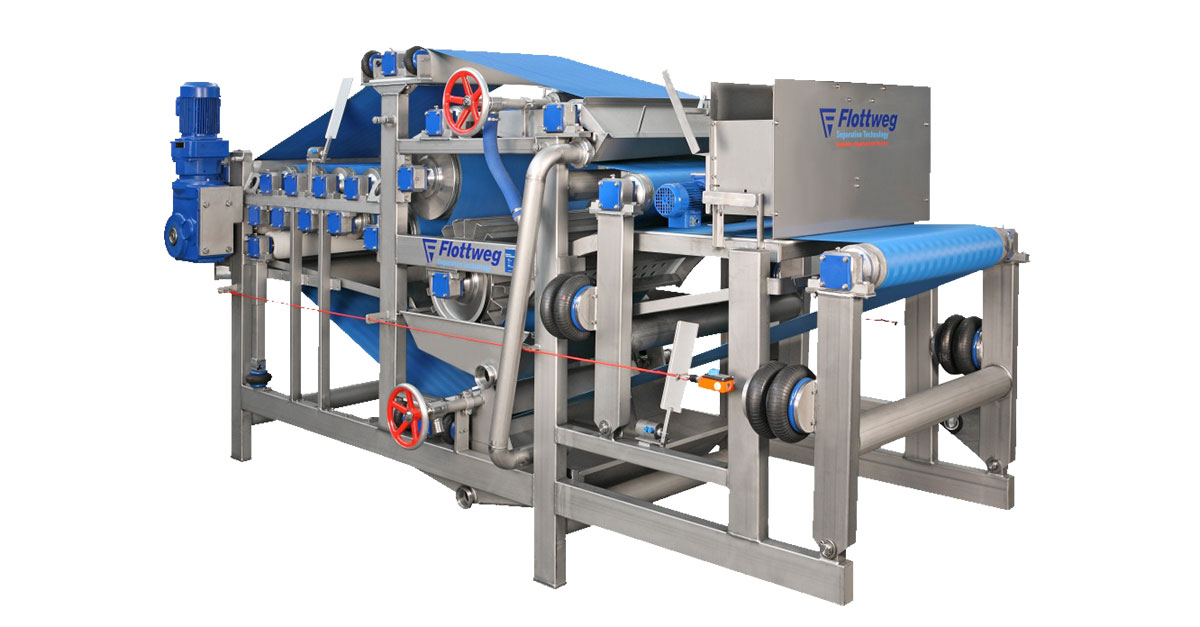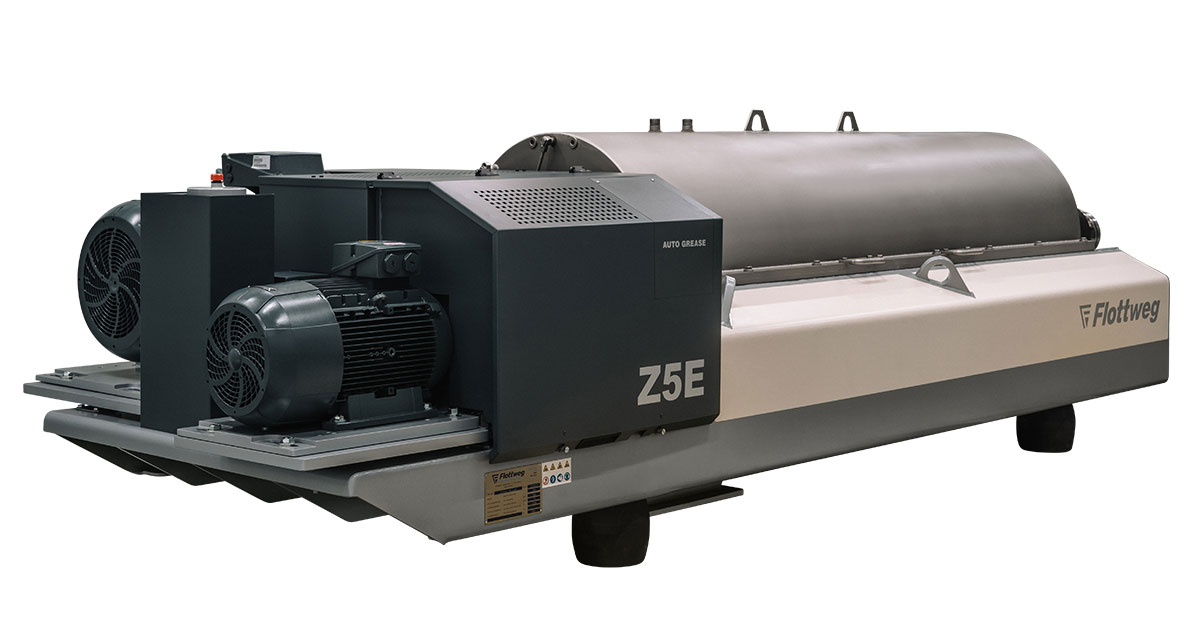2022-03-14
Flottweg belt presses enable cost-efficient juice extraction with high product quality.
The direct juice, also known as mother juice, is a type of fruit juice that is ideally packaged immediately after pressing. A distinction is made between clear and naturally turbid or cloudy juice. During production, it is particularly important to gently extract a large amount of the valuable juice from the fruit. Examples of this are orange juice or, in our region of the world, the classic apple juice.
The consumption of direct juice, not-from-concentrate, is steadily increasing due to changes in consumer behavior. Nevertheless, manufacturers of direct juices are constantly under great cost pressure, given rising costs related to processing and the varying cost of raw materials. At the same time, classic apple juice concentrate is frequently subject to price fluctuations, which makes continuous cost analysis essential. Therefore, the selection of a cost-effective pressing system that also achieves high-quality results is of great importance.
The Process in Detail
For the production of direct juices, hammer mills or grating mills are used for the initial pome fruit processing. These milling systems have proven themselves over the years – in terms of their easy handling and robustness in daily use. To prevent oxidation changes to the mash, it must be processed as rapidly as possible. For the same reason, the holding time in the mash tank should also be short. To minimize mash oxidation, vitamin C is usually added to the extent allowed by law. During pressing, the pectolytic enzymes present in the fruit cause degradation reactions which have a negative effect on the stability of the turbidity.
To address these challenges, the Flottweg belt press has undergone several design modifications. For example, the mashing period can be reduced by having short lines between the mill and the press, a feature that is usually particularly effective in small- and medium-sized plants. The mash is spread evenly over the lower belt by a special feeding system. A large portion of the free-flowing juice is gently extracted in the so-called wedge zone, which at the same time creates a stable press cake.
The first roller in the pressing zone facilitates rapid juice discharge to both sides thanks to its L-shaped design. Additional press rollers ensure high economic utilization of the mash by increasing pressure and shear forces. As an example, yields of up to 84% by weight can be achieved with single-stage pome fruit processing, even without the use of mash enzymes. Often the pomace is dried and utilized by the pectin industry. The continuous cleaning of the screen conveyors takes place directly in the so-called cleaning zone inside the machine. Special nozzle pipes are used in this process, in which high pressure washing water continuously removes sediment particles from the belts.
In general, the mash remains in the machine for no longer than three to five minutes. This minimizes the opportunity for browning reactions, which can be caused by the fruit's own polyphenol oxidase. The desired turbidity ratio in the direct juice is set by subsequent clarification using a separator. A KZE flash pasteurizing treatment not only conserves the juice, but also ensures complete inactivation of all pectolytic enzymes. This means that the juice remains turbidity-stable even over a longer storage period in the tank.
 Belt press installed in the fruit juice industry
Belt press installed in the fruit juice industrySecond Extraction for Increased Yield
If the price of the concentrate is high, it makes sense to consider a second extraction of the pomace. As a rule, vapor condensate is added at a mashing screw, below the press discharge chute. This achieves a pumpable structure and an optimal mixing of the pomace is ensured. After a product-dependent dwell time, juice is extracted a second time. A large part of the juice present in the cells, that could not be extracted by purely mechanical pressing in the first step, can be extracted by using enzymes even in the cold temperature range. In addition to belt presses, decanters have also proven themselves as a second extraction system. With this system, the mash is extracted using centrifugal force.
As each fruit requires its own processing technology, it is necessary to have flexible juice removal systems. For example, when processing soft fruit like berries, the mash is passed through a decanter in the first extraction stage. This results in juices with a low turbidity content with yields of 75%-85% by weight.
If the pomace is extracted in the second stage using a Flottweg belt press, total yields of up to 92% by weight can be achieved. This combination is ideal for processing carrots. The use of decanters in the first stage results in a high yield of beta-carotene. The pomace is juiced in a second extraction stage with a belt press, without the addition of water. This ensures optimal use of the raw material. This combined juice removal system can also be used effectively to process other fruit and vegetable mashes.
 Decanter centrifuge in hygienic design. Especially suitable for use in the food industry
Decanter centrifuge in hygienic design. Especially suitable for use in the food industry